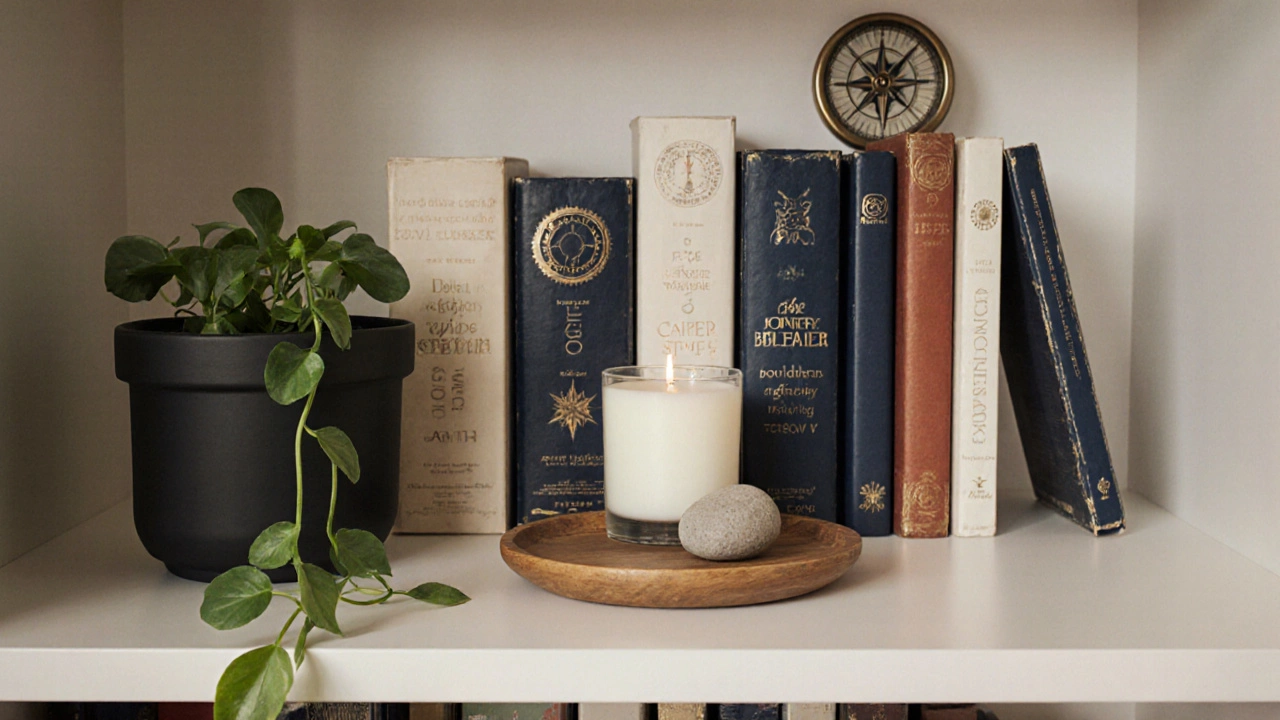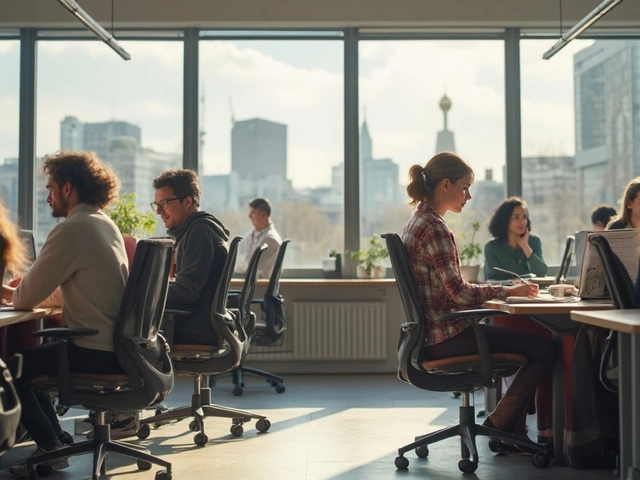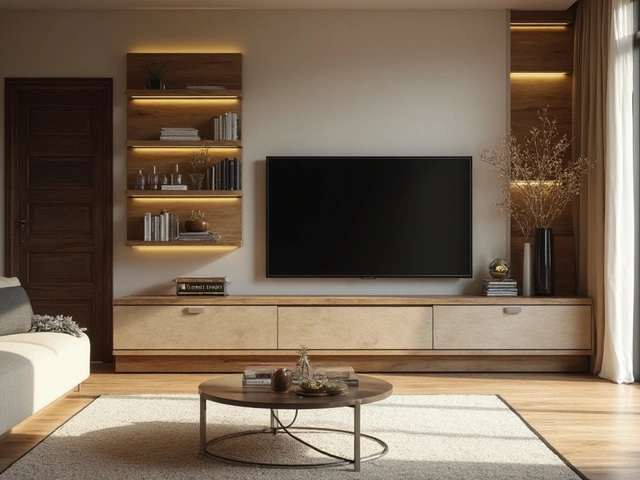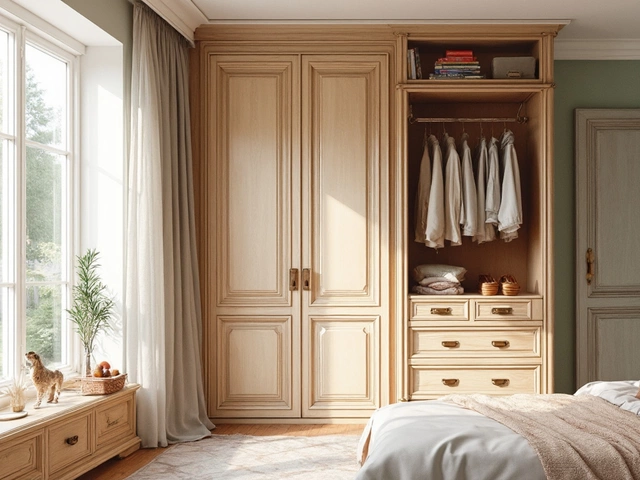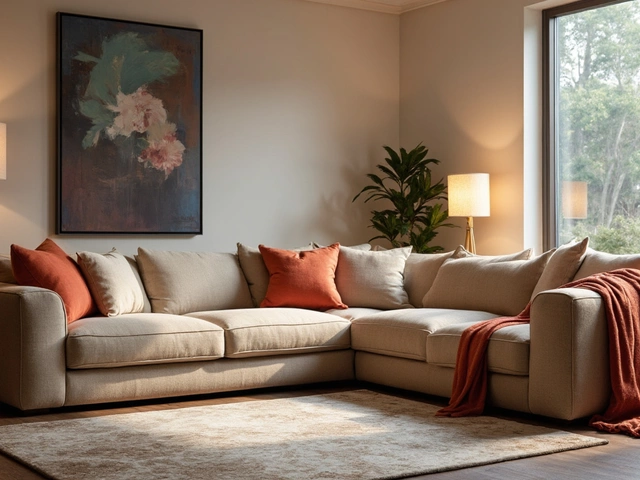Bookshelf Clutter Calculator
Your Bookshelf
How many items do you currently have?
Results
Most people buy a bookshelf thinking it’s just for books. But once you start adding things-vases, photos, plants, trinkets-it turns into a mess. The shelf looks busy, not beautiful. You don’t want your bookshelf to feel like a garage sale. You want it to feel calm, intentional, and like it belongs in your space. The trick isn’t to fill every inch. It’s to leave space so the good stuff can breathe.
Start with the books
Books are the foundation. But not all books should be standing upright. Mix it up. Stack some horizontally. Group them by color-not just genre. A row of navy blues, then a cluster of creams and whites, then a pop of red. It creates rhythm without needing more objects. Keep your most loved books visible. Put the ones you read often at eye level. Tuck away the ones you only keep for show deeper in the shelf.
Leave gaps. Don’t pack the shelf like a supermarket aisle. Aim for 30% empty space. That’s not a rule carved in stone-it’s a feeling. If you can’t walk past the shelf without feeling a little overwhelmed, you’ve got too much on it.
Use objects with purpose
Every item on the shelf should earn its place. Ask yourself: does this bring me joy? Does it serve a function? Or is it just there because I bought it on sale?
Plants are great. A small snake plant or a trailing pothos adds life without noise. Keep them in simple pots-terracotta, ceramic, or matte black. No glittery fairy lights or plastic flowers. They scream "I tried too hard."
Books aren’t the only thing you can stack. Try a small sculpture, a ceramic bowl, or a vintage camera. One or two pieces max per shelf. Choose things with texture: wood, stone, woven baskets, brass. Avoid shiny plastic or mass-produced decor. They catch light in the wrong way and make the shelf look cheap.
Height matters
Think vertically. A tall vase next to a stack of books creates balance. A low tray holding a candle and a few seashells grounds the bottom of the shelf. If everything is the same height, it looks flat. If everything is tall, it looks chaotic.
Place taller items at the back or ends. Let shorter things sit in front. This creates depth. It’s like a photo with foreground and background-you’re not just looking at a flat line of stuff.
Use books as risers. Stack two or three to lift a small object up. It’s functional and invisible. No one knows you’re using books as a stand. They just see a nice display.
Color and contrast
Color doesn’t mean rainbow. It means intention. Pick a palette. Maybe it’s earth tones: beige, olive, rust. Or cool tones: gray, white, slate blue. Stick to it. Even if you have colorful book spines, group them so they don’t jump out randomly.
White space is your friend. A blank wall behind the shelf? Great. A dark shelf? Even better. Let the objects stand out. If your shelf is painted a bold color, keep the decor neutral. If your shelf is bare wood, let the objects bring the color.
One rule: if it doesn’t match your overall room palette, it doesn’t belong here. That turquoise figurine from your trip to Mexico? Maybe it deserves a spot on the mantel. Not here.
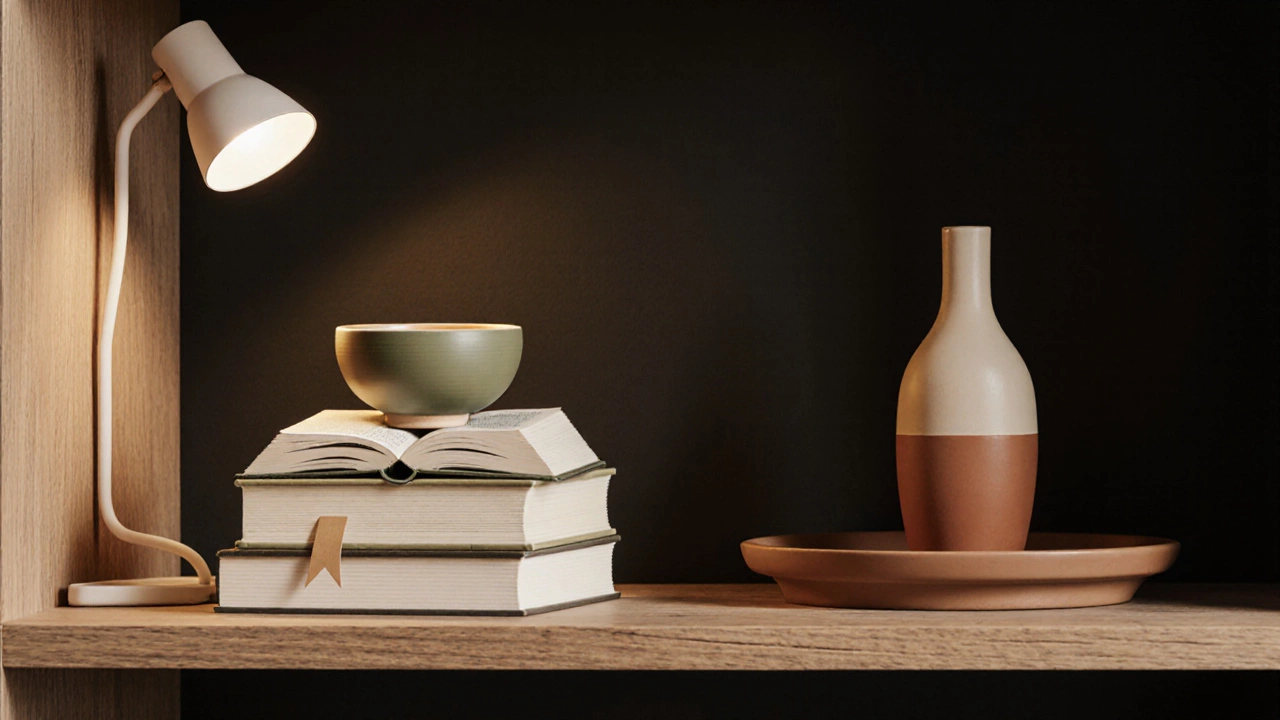
Less is more-really
Most people add one more thing. Then another. Then a photo frame. Then a tiny lamp. Then a stuffed animal their kid left behind. Before you know it, the shelf looks like a thrift store exploded.
Try this: take everything off. Clean the shelf. Put back only five items. Live with it for a week. See how it feels. If you miss something, add it back. But don’t rush. Let the shelf tell you what it needs.
That’s how you avoid clutter. Not by buying a new organizer or a fancy basket. By editing. By being ruthless. By asking: does this belong? Or am I just holding onto it because I feel guilty?
Lighting makes it pop
A little light changes everything. If your bookshelf is in a dark corner, it disappears. A small LED strip behind the shelf? Instant warmth. A narrow floor lamp shining on it? Suddenly it’s a feature, not just storage.
Don’t use overhead lights. They flatten everything. Side lighting creates shadows, depth, texture. It makes a ceramic bowl look like it’s glowing. It turns a stack of books into a sculpture.
If you can’t add lights, position the shelf where natural light hits it during the day. Morning sun on a few well-chosen objects is better than any spotlight.
Update slowly
Your bookshelf isn’t a museum. It should change with you. Swap out a seasonal item-a pinecone in winter, a seashell in summer. Rotate a photo every few months. Let your shelf reflect your life, not just your Pinterest board.
But don’t overhaul it every weekend. That’s how clutter creeps back in. One small change every few months keeps it fresh without feeling chaotic.

What to avoid
Here’s what kills a bookshelf fast:
- Too many small objects (keychains, figurines, magnets)
- Plastic or cheap-looking decor
- Matching sets (like a whole row of identical vases)
- Cluttered trays or baskets with too much inside
- Overused items (candles, crystals, yoga mats-yes, people do this)
These don’t add personality. They add noise.
Real example: a shelf that works
Here’s what a real, clutter-free shelf looks like:
- Three rows of books, stacked vertically and horizontally, grouped by color (navy, cream, rust)
- A small ceramic pot with a trailing pothos on the left
- A flat wooden tray holding a single candle and a smooth river stone
- A vintage brass compass placed at the back, slightly angled
- One open book face-down with a bookmark, left on the middle shelf
That’s it. Five items. No more. No less. It feels alive, but not loud. It invites you to pause. That’s the goal.
Final thought: your shelf is a mirror
A cluttered bookshelf doesn’t mean you’re messy. It means you haven’t decided what matters. Once you start choosing what to keep-and what to let go-you’re not just decorating. You’re curating your life.
Take a breath. Step back. Ask yourself: what do I want this shelf to say about me? Then remove everything that doesn’t answer that question.
How many items should I have on my bookshelf?
There’s no magic number, but aim for 3-7 items per shelf, depending on size. The key isn’t quantity-it’s balance. If you can count the items in under five seconds, you’re probably in the right range. More than that, and it starts to feel busy.
Should I use baskets or trays on my bookshelf?
Only if they’re simple and intentional. A single woven tray holding two things-a candle and a book-is fine. A basket full of random remotes, chargers, and loose papers is not. Baskets are for hiding clutter, not displaying it. If you’re using one, make sure what’s inside is still part of the design.
Can I decorate a bookshelf if I don’t have many books?
Absolutely. Your shelf doesn’t need to be full of books to look good. Use art books, photo albums, or even stacks of magazines. Fill gaps with a small sculpture, a framed print, or a piece of driftwood. The structure of the shelf gives you a canvas. The items you choose are your brushstrokes.
Why does my bookshelf look messy even when it’s clean?
It’s probably because everything is the same height, same color, or same material. Visual variety-texture, shape, height, and spacing-is what creates calm. A shelf full of identical items feels robotic. Mix wood with ceramic, tall with short, shiny with matte. Let things breathe.
How often should I re-decorate my bookshelf?
Every season is a good time to refresh. Swap out a seasonal item, rotate a photo, or move one object to a different shelf. You don’t need to overhaul it. Tiny changes keep it feeling alive without becoming cluttered. If you’re tempted to add something new, wait a week. If you still love it, then add it. If not, let it go.
